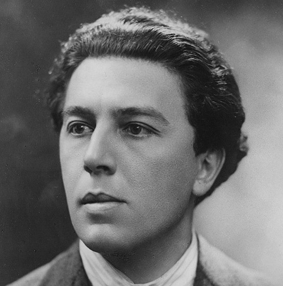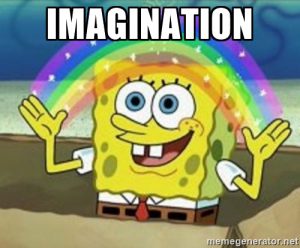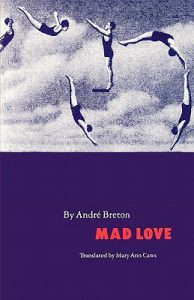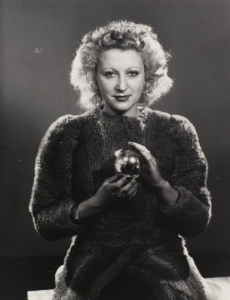Jordan Jones
What is surrealism? Imagination? Anti-Reality?
“SURREALISM, noun, masc., Pure psychic automatism by which it is intended to express, either verbally or in writing, the true function of thought. Thought dictated in the absence of all control exerted by reason, and outside all aesthetic or moral preoccupations.”
“ENCYCL. Philos. Surrealism is based on the belief in the superior reality of certain forms of association heretofore neglected, in the omnipotence of the dream, and in the disinterested play of thought. Are you still reading this wow I’m impressed. It leads to the permanent destruction of all other psychic mechanisms and to its substitution for them in the solution of the principal problems of life.”
– André Breton, Manifesto of Surrealism
Alright so if you took the time to read those boring definitions, I’m sorry. Basically, surrealism’s aim was to “resolve the previously contradictory conditions of dream and reality” AKA let’s channel our unconscious to unlock the power of the imagination. And then write about it.
Lets start by breaking down the root group responsible for this mind trickery that is surrealism: Louis Aragon, Antonin Artaud, René Crevel, Robert Desnos, Paul Éluard, Michel Leiris, Benjamin Péret, and Tristan Tzara. That’s a lot of average first names and probably commonly mispronounced last names. This group of people developed around André Breton, and constantly changed their membership due to personality clashes and changes in ideas, like every great rock band.
For now, we are going to focus on only one dude and see how he got started in life and more importantly why he just lurvs surrealism.
Andre Breton had a common working-class upbringing- writing poetry, studying medicine + psychology, working in psych units during World War I, etc. Obvi he’s a pretty cool guy that helped a lot of people. He was originally a Dadaist (lol) and broke away from the group due to some differences.
Side note: Dadaism= “anarchy born out of disgust for the social, political and cultural values of the time” AKA dadaism is more of a protest movement rather than a form of poetry or art.
Breton produced poetry, novels, theory, criticisms, and obvi- surrealism. One of his collections of poems, Mad Love, is considered to be one of his most valued pieces.
Here’s a few excerpts from Mad Love:
- “All my life, my heart has yearned for a thing I cannot name.”
- “Love is when you meet someone who tells you something new about yourself.”
- “The mind chooses to believe that the loved object is a unique being, whereas often social conditions of life can destroy such an illusion.”
- “The greatest hope, I say, is the one in which all the others are met, is that it is exists for everyone and that for everyone it lasts. That the absolute gift of one being to another, which can exist only in reciprocity, be in the eyes of everyone the only natural and supernatural hanging bridge cast across life itself.”
So some of these sound like they belong in a fifteen year old’s “happily ever after” Pinterest board, but all of them provoke a sense of hope, longing, or missed opportunity. His writing is something that is relatable, and causes the audience to question some part of themselves or their love for themselves and others.
Gossip sesh- Apparently this collection of poems was for his wife at the time, Jacqueline Lamba. She was a total babe and a surrealist groupie. Andre and Jacqueline split in 1947, then she married an American sculptor, David Hare. During this time, she was apparently having sexual relations with Frida Khalo. I’m sure Diego Rivera luuurrrvedd this. Filthy womanizer. Also, having a sexual relationship with other women (being a woman) during this time period was considered a huge scandal. Divorce and homosexuality? The fifties version of TMZ probably had a field day with this. Anyway, it’s pretty interesting to see the circles that these artists run in.
I feel like the surrealist movement to art professionals from the twenties to the thirties is like the hippie movement to businessmen in the late sixties and early seventies. Going against the grains of accepted social standard and tradition, all while inspiring imagination and change. And then put all that on paper or canvas, maybe form it out of clay.
So back to these amazing works of poetry: Mad Love. BookRags does a pretty great job of explaining this piece: “Breton’s arguments about love and poetry in Mad Love do not develop logically or move linearly. As a surrealist text, instead the connections that Breton makes between ideas, and between the different sections of the book, are dictated by what some would call ‘chance’ or ‘circumstantial-magical’ connections, but that Breton sees as tied to the unconscious.” AKA this wasn’t planned. He let these ideas develop naturally by the lining of the cosmos. Which is awesome but also dense at times because the audience finds themselves trying to dissect Breton’s mind to understand what he’s feeling and wanting the audience to feel as well. It can almost be compared to Virginia Woolf’s stream of consciousness idea. I’m down for this.
Bibliography
“A Brief Guide to Surrealism.” Academy of American Poets. Web. Feb 7. https://www.poets.org/poetsorg/text/brief-guide-surrealism.
“André Breton.” Academy of American Poets. Web. Feb 3. https://www.poets.org/poetsorg/poet/andré-breton.”Surrealism.” The Art Story Foundation. Web. Feb 6. http://www.theartstory.org/movement-surrealism.htm.
“Dada: Art and Anti-Art.” Arty Factory. Web. Feb 3. http://www.artyfactory.com/art_appreciation/art_movements/dadaism.htm.
“Mad Love.” BookRags. Web. Feb 6. http://www.bookrags.com/studyguide-mad-love-french-modernist-library/quotes.html#gsc.tab=0




